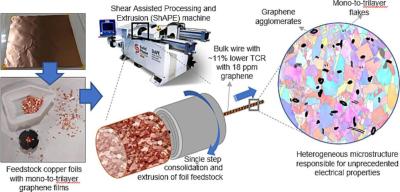Researchers examine brucite/graphene composites for improved electronics
Researchers at the University of Bologna have introduced and considered a single layer of brucite Mg(OH)2, a 2D material that can be easily produced by exfoliation (like graphene from graphite), for the creation of van der Waals composites (known as heterostructures, or heterojunctions), where two monolayers of different materials are stacked and held together by dispersive interactions.
First principles simulations showed that brucite/graphene composites can modify the electronic properties (position of the Dirac cone with respect to the Fermi level and band gap) according to the crystallographic stacking and the presence of point defects. This could be meaningful for various applications, such as electronics.
